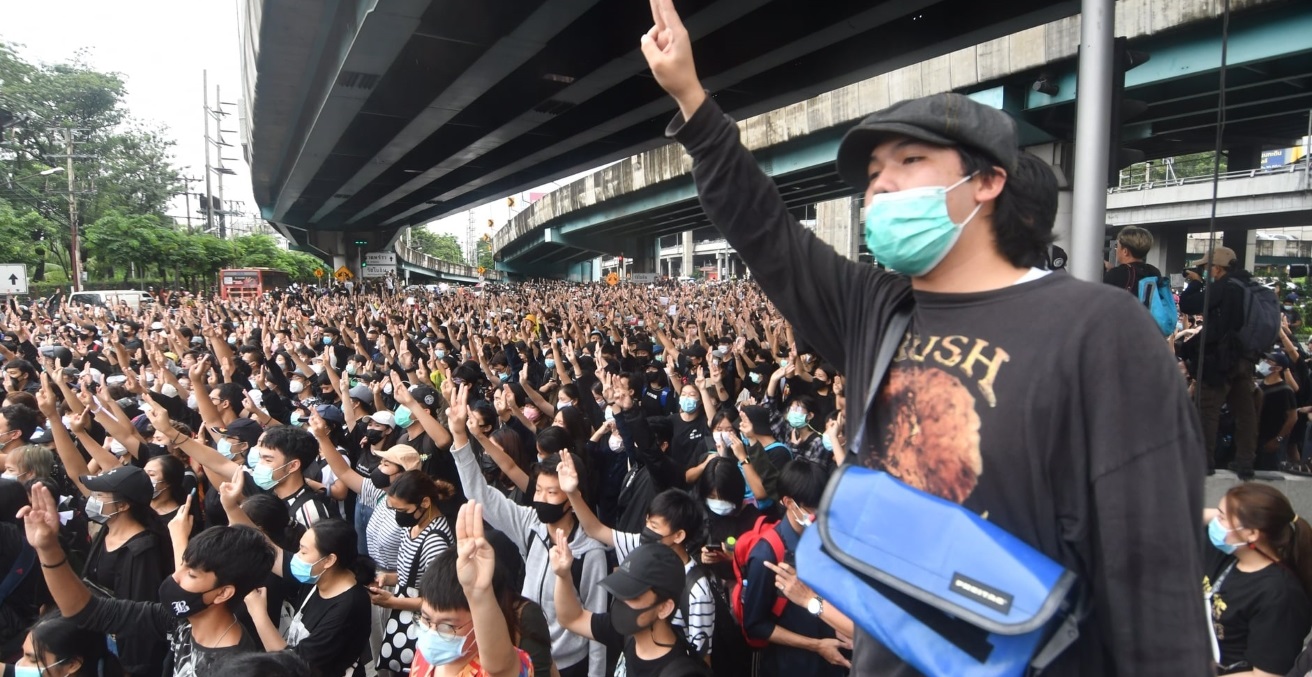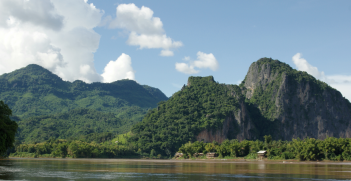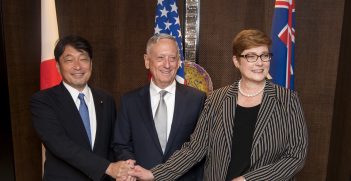Street Moves: Government Resistance to Protests in Thailand

Protests led by young, educated, urban people against the Thai government and “the Royal Institution” began in the middle of 2020. The protesters have yet to achieve their aims, but they have clearly exposed the disdain with which “the oligarchic establishment” regards them.
On October 14, the 44th anniversary of a terrible massacre of protesting students on and near the Tha Prachan campus of Thammasat University in Bangkok, students gathered at the Democracy Monument to demand, inter alia, the military-backed government of Prayuth Chan-o-cha stand down, that recent moves by the King to appropriate assets of the Crown Property Bureau be reversed, that changes be made to the present constitution of the Kingdom, including a provision that the Senate again be elected rather than selected by the military, and an end to harassment of protesters by the police. The two original student groups had agreed to merge and to be known as the People’s Party, only to dissolve this arrangement later. There was no surprise about the protest. The roving Bangkok Post camera feeding video online in real time from the street, showed protesters were young – university and high school students – whereas TV footage and still photographs revealed a wider age range at the protest rally at Sanam Luang/Thammasat University on September 19.
Yellow shirts at Democracy Monument
Much has been made of the presence of people dressed in yellow t-shirts lining the footpaths of Ratchadamnoen Avenue. When asked by reporters from the Bangkok Post why they were there, they responded that they were from District Offices in different districts and had been instructed by their supervisors to go to the avenue with paper flags to greet the royal motorcade scheduled to travel along the route at about 5:00 pm. In due course, at a little after 2:00 pm, the protesters moved off down the venue with no hindrance by the flanking police. Nor was there any visible hindrance by the yellow-shirted cheer squad, let alone the face-off claimed in some reports. The protesters did briefly meet a police barrier, though, in the form of four buses drawn up across their route beyond Ratchadamnoen. After an hour, the protesters persuaded the police to remove the buses, perhaps with the threat that otherwise the buses would be overturned as was rumoured on the street, and the route was cleared.
The royal motorcade
At some stage, protesters and the royal motorcade shared the roadway. As the cars passed the protesters, the royals could be seen craning their necks and peering between police walking beside the cars. While the government later claimed that the protesters threatened the liberty of the royals, nothing that could be seen through television cameras suggested anything of the sort. All the same, protesters did offer the royal limousine their three-fingered salute and a few protesters took the absolutely remarkable step of shouting demands at the car’s occupants. It has been suggested that the police knew exactly what they were doing in mixing the royal procession and the protesters. The peaceful protesters were dispersed late at night by a display of “overwhelming” and unnecessary force by police.
That evening the government announced a new or augmented state of emergency. Among other restrictions, the new decree banned gatherings of more than five people. It was defended partly on the grounds of the alleged threat to the queen’s liberty. The government also announced the arrest of five protest leaders, at least three of whom were eventually released on bail some days later, only to be re-arrested on October 21.
The Ratchaprasong defiance of the state of emergency
The next day, a crowd of protesters that appeared to involve some tens of thousands of people successfully forced police back to take possession of the Ratchaprasong intersection. This intersection is adjacent to several large department stores and was at the centre of the violent confrontation between the army and the “redshirts” in 2010. The rally was, of course, contrary to the emergency decree – the protesters were plainly defying the government. However, after a lot of pushing and shoving and further arrests by the police, the crowds finally dispersed. The following evening, a few thousand protesters again gathered at Patumwan intersection, a few hundred metres along Thanon Ploenchit from Ratchaprasong. This time, the police brought in water cannons threateningly containing an identifying blue dye. The protesters beat a hasty retreat, wet from the water cannons and the rain. According to the intrepid Bangkok Post reporters, rumours flourished that the police had used tear gas and were prepared to use rubber bullets.
On Saturday, the cabinet endorsed the new state of emergency and Prime Minister Prayuth Chan-o-cha, with members of the cabinet, urged parents to look out for their student children for fear of unspecified “impacts” on them, and for fear of what “the hidden masterminds of the protest” might yet have in mind – an implicit suggestion that the leader of the Progressive Movement, Thanathorn Juangroongruangkit is directing the protests from behind the scenes. The PM conceded that the decree provides for a curfew but declared that there was no need to invoke the provision for the moment. At the same time, the government made orders which closed selected stations on the city’s rail systems for different periods.
Protesting without public transport
Notwithstanding, groups of students gathered by tuk-tuk, motorcycle, and private car at three locations on the edge of the city in a sort of cat and mouse game with the police. By now the protesters were avowedly “leaderless” to avoid suspicion of being led by Thanathorn and exposure of particular figures to arrest. On Sunday, they maintained the game with last-minute decisions on where to protest, and large numbers turned out. Monday’s rally at Kasetsart Intersection and Tuesday’s in Pinklao brought out tens of thousands. COVID-19 is another danger lurking in these large crowds, though. There is no distancing at the rallies, and relatively few people are wearing masks.
The Post’s reporters recounted being intimidatingly warned by the police that their footage could reveal the identities of protesters defying the emergency decree, including anyone who seemed to be a leader, whether named as such or not. At Lat Phrao on Sunday, organisers passed out aluminium foil with which to wrap their electronic cards to thwart microchip scanners. By Monday, October 19h, the government was threatening to close down various media organisations, and block the use of Facebook by the Bangkok Post and other media companies and Telegram, a messaging app used by the protesters.
How serious is it?
The government appears to be is unfazed by the protests – after all, the protesters are not “the other.” These are not the violent conflicts of 2010 and 2014, as anyone who was on the ground close by the confrontation in 2010 and literally on top of the PDRC protests of 2014, as this author was, can attest. The rally and march on October 14 were allowed to proceed. Thursday’s protest at Ratchaprasong was allowed to run its course. Even water cannons and blue dye are what you do/what you expect.
Expressions of concern within Parliament and in press editorials during the week following the march on October 14 have evidently failed to stir the government out of its inertia. In another example of what Khemthong Tonsakulrungruang has called “constitutional rot,” government parties blocked proposals for constitutional reform. Nevertheless, by October 18, the speaker of the House of Representatives, Chuan Leekpai, was moving for a special session of the lower house of the Parliament to discuss the current situation. In fact, a joint sitting of both the House and the Senate may come to pass on October 26-27. In the meantime, there was a confrontation on October 21 between the riot police and protesters outside Government House, at which the protesters gave the prime minister three days to announce that the government would step down. This demand is almost certain not to succeed. The government will be inclined to stall until “the children” tire of the game and go home, and groups of yellow-shirted royalists are beginning to push back. Whenever the protesters may have to retire from the lists, however, this at least is true: the protesting generation of 20- to 30-year-olds will be much tougher and cleverer the next time it mounts a challenge to the oligarchy.
Dr Gavan Butler is an honorary associate in political economy at the University of Sydney. He is also a member of the editorial committee of the Journal of Australian Political Economy.
This article is published under a Creative Commons Licence and may be republished with attribution.





